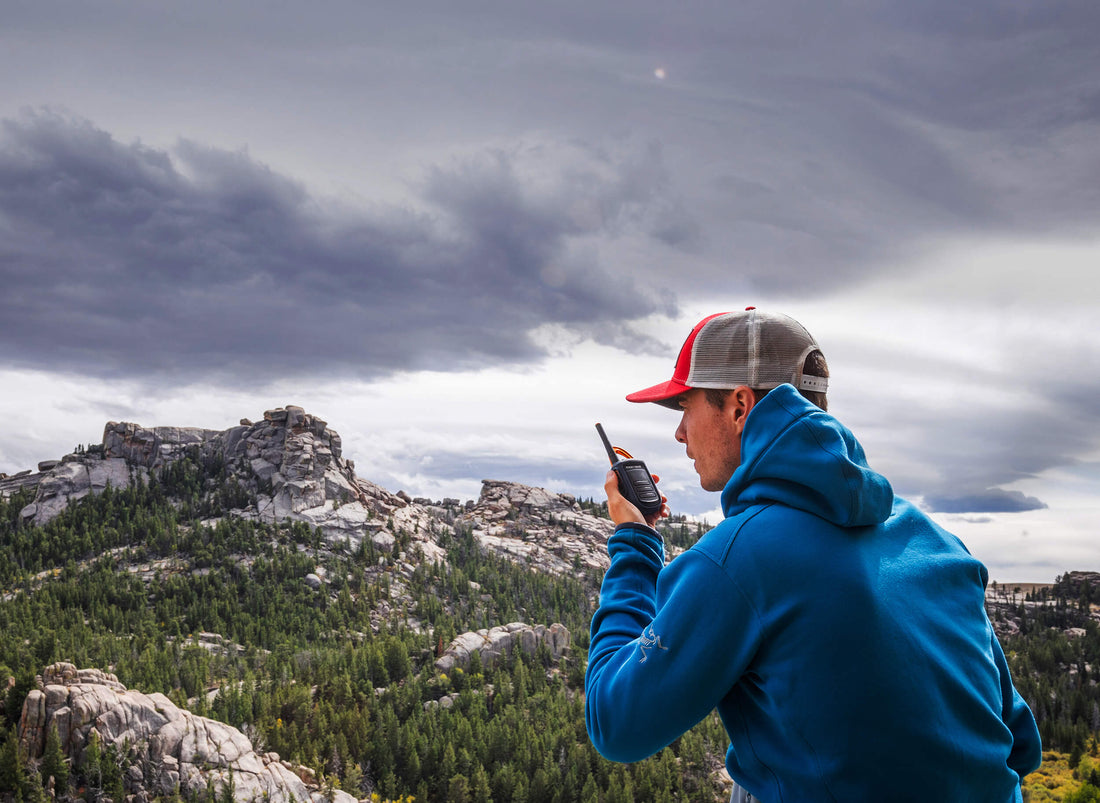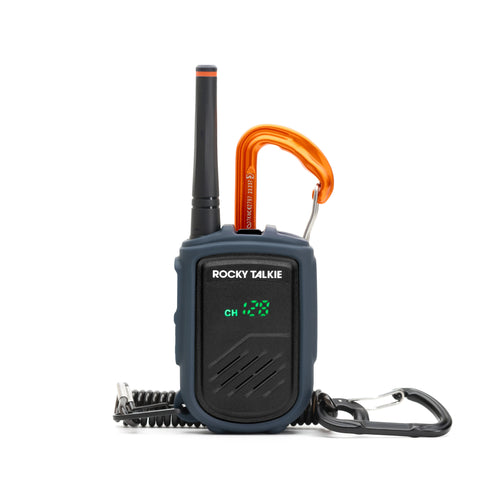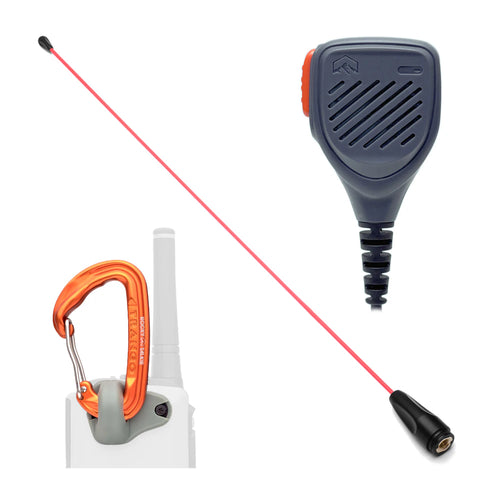
Understanding Walkie Talkie Range
| 4 min read | 5 CommentsUnderstanding how far hand-held radios can communicate is one of the most confusing parts of buying a radio. Most radio manufacturers advertise maximum ranges under ideal conditions. However, the actual usable range of radios changes drastically situation to situation and is usually no where close to the maximum range listed. Some consumers believe that this is false advertising on the manufacturer’s part while others argue that these maximum ranges are truly the most objective metric to provide. Regardless of which camp you subscribe to, we hope that this article helps you understand the true ranges to expect while out on your adventures.
What determines the maximum range of a walkie talkie?
The maximum range of a radio is tested in ideal conditions set up by the manufacturer. For a visual, imagine two hot air balloons in direct line of sight on a clear day.

In these conditions, most environmental factors are removed, and we can assume the signal is propagating through only air. A radio’s maximum range depends on a variety of factors, with three of the most important factors being:
- Output power
- Transmission frequency
- Antenna type / size
Most U.S. consumer walkie talkies fall into two radio services regulated by the FCC: FRS (Family Radio Service) or GMRS (General Mobile Radio Service). FRS radios do not require a license to operate while GMRS radios do. FRS radios use a standard set of 22 frequencies granted by the FCC. They all have fixed antennas and use a maximum of 2 Watts of power. In contrast, handheld GMRS radios are limited to 5 Watts of power, which grants them greater range in some situations.
There are many manufacturers that sell FRS radios and all claim different maximum ranges, from around 20 to 35 miles. Despite this, all of these radios are constrained by the same regulations which restrict the transmission frequency and output power. As a rule of thumb, radios with the same output power will have fairly similar ranges. You should also expect that the usable range of a walkie talkie will be much lower than the maximum range achieved in ideal conditions.
So what determines the actual usable range of Walkie Talkie?
The usable range of a walkie talkie is limited by a large host of factors, and most of these factors are very hard to quantify. Factors like the weather, the geometry of the landscape around you, the type of obstructions in the landscape, noise from other radio signals, and your elevation all play a factor. These all make it extremely difficult to estimate the range you will get in a given area. In this post, we will try to provide some guidelines for guessing what your range will be, but it is best to test the target area yourself before relying solely on radios for communication.
The most critical of these factors tends to be the geometry of the landscape around you and the obstacles that are contained in that landscape. For purposes of discussion, all ranges will be in reference to a 2 watt (FRS license-free) radio.
Geometry:
The FCC limits license-free walkie talkies to the Ultra High Frequency (UHF) spectrum. These radio signals travel in a straight line until they bounce off or are absorbed by objects. The end result is that UHF walkie talkies are generally considered "line-of-sight" devices. While you can definitely get signal around bends, it is important to know that the radio waves have to bounce to get to you, thus drastically reducing their strength. The chart below gives a rough guide for what to expect your range to be given the geometry of the landscape around you.
|
Terrain |
Geometry |
Actual Range |
|
Mountains |
Peak to Peak |
5 to 25 miles |
|
|
Peak to Valley |
3 to 10 miles |
|
|
Front to Back |
0 miles |
|
City |
Rooftop to Rooftop |
2-5 miles |
|
|
Street to Street |
< 1 mile |
|
Ocean |
Boat to Boat |
Distance to horizon (4 to 6 miles) |
|
Forest |
Flat Ground |
1-5 miles (depending on tree density) |
Obstacles:
UHF radio waves are weakened and can be blocked by obstacles. Obstacles such as trees will lower radio range while obstacles such as mountains can be expected to completely block transmission. So even though forested areas do attenuate the signal, in these regions you should expect your range to be limited far more by the hills blocking your signal than the trees absorbing it. In more urban areas, buildings will significantly block your signal. Most concrete, brick or metal structures reflect all radio waves. In cities, with a 2 Watt radio, you can expect a range of less than 1 mile.
Application to Adventure Sports
Despite range limitations, walkie talkies can still be very useful for making outdoor sports safer and more fun. There are many sports where range will rarely be a cause for concern due to the nature of the sport - for example, rock climbing where partners are usually on a shared rope or paragliding where terrain is often not a factor. In other sports, range can be less reliable. For use in skiing, a good rule of thumb is that you will usually have adequate range while on the same side of the mountain, but will lose contact entirely when there is a mountain blocking the signal. This same rule applies to sports such as mountain biking, hiking, trail running, etc. The simple graphic below illustrates some of these examples. The two people on the back-side of the mountain will have no signal, while the radio users with a check-mark will likely be able to communicate without issue.

5 Responses
Leave a comment (all fields required)
Comments will be approved before showing up.














Jake
|
Mar 17, 23
Bryce from Rocky Talkie
|
Jul 19, 21
Debi Stanton
|
Jul 19, 21
Andrew
|
Mar 24, 20
Shon Bowen
|
Feb 11, 20